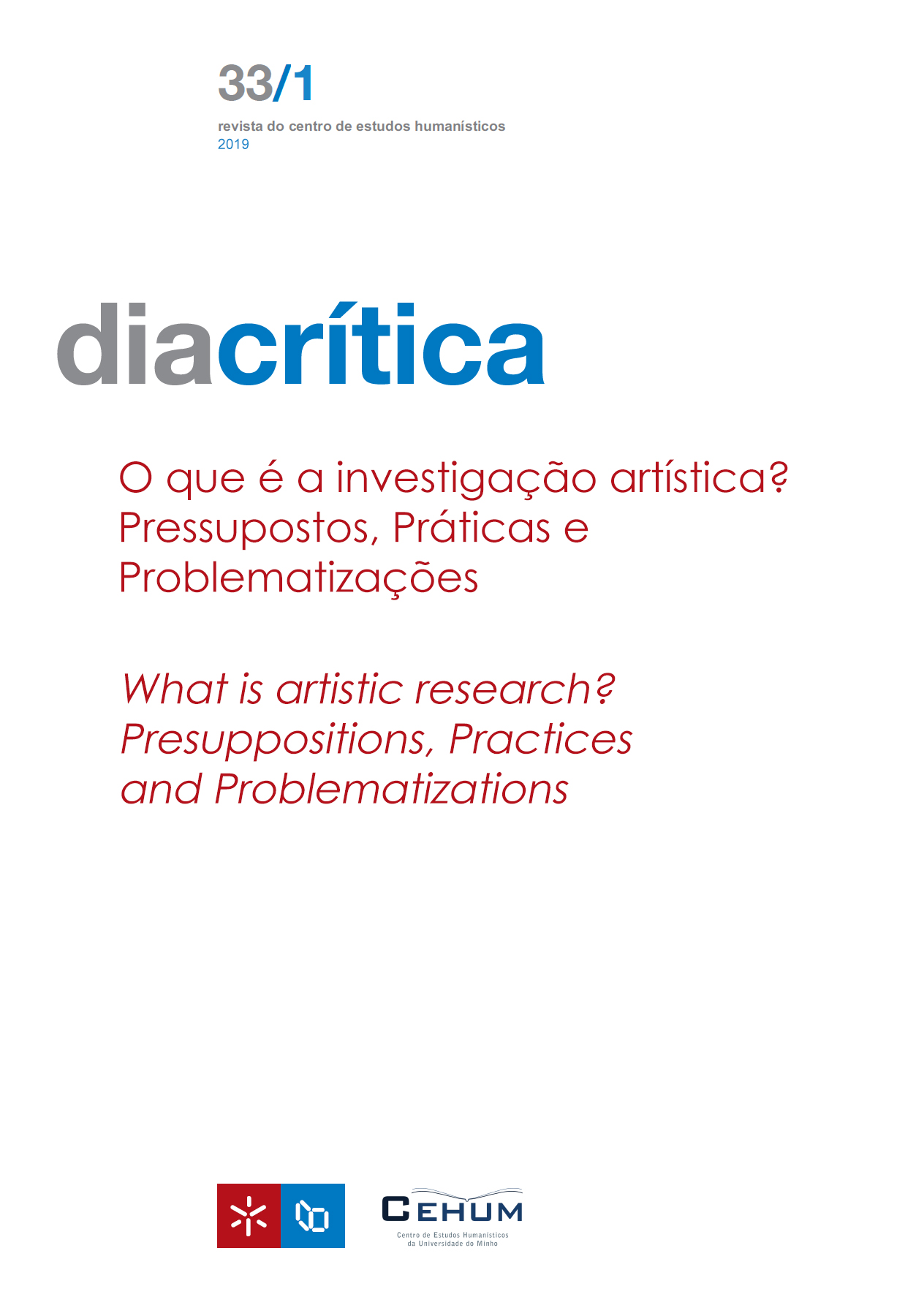The artistic duality of the composer-performer
DOI:
https://doi.org/10.21814/diacritica.5039Keywords:
Composer, Performer, Guitar, Music, Performance, ArtAbstract
The work of art lives only in the interpretations that are made of it, a fact that have greater dimension in the case of music and other performing arts; besides that, these interpretations are infinites before a multitude of personalities. The interpretation supposedly requires faithfulness to the musical work, but the work also inevitably leaves a margin of freedom for the interpreter's view. Composition and musical performance imply interaction with a physical reality that imposes limitations, in which the personalities of the artists will make different decisions to overcome the obstacles, revealing a style that will show the spirit of the person in the work. We consider that in the special situation of the composer-performer, that is, the composer who write a piece that he himself performs, the artist goes through a dialogue with the matter more than once, dealing with physical reality, first during the composition and later in the performance, thus communicating the work and its way of understanding the work at the same time. In this case there are not two personalities intervening in the same work, but a single person in different situations and time lapses, interacting with the form in different aspects, representing a little-known challenge, which we analyze in this article.
References
Barceló, R. (1995). La digitación guitarrística. Recursos poco usuales. Madrid: Real Musical.
Barceló, R. (2010). Delviolín a la guitarra: Influencias en la técnica, escritura, organología y expresión.Roseta,5(2), 48–59.Madrid: Sociedad Española de laGuitarra.
Barceló, R. (2015). O Sistema Posicional na guitarra. Origem. Conceitos de Posição. Saarbrücken: Novas Edições Académicas.
Berlioz, H. (1843). Grand Traité d’Instrumentation et d’Orchestration Modernes. Op.10, (VIII). Paris: Schonenberger.
Brouwer, L.(1982). Pieza sin título I. La Habana: Ediciones del Patrimonio Musical de Cuba.
Eco, H. (2001). La definición del Arte.Barcelona: Ediciones Destino.
Escande, A. (2005). Abel Carlevaro. Un mundo nuevo en la guitarra. Montevideo: Aguilar –Fundación BankBoston.
Escande, A. (2009). Don Andrés y Paquita. La vida de Segovia en Montevideo.Lulu.
Fabini, E. (1903). Mozartiana(para guitarra). Paris: Max Eschig (1934).
Falla,M. de (1920). Tombeau de Claude Debussy(para guitarra). Paris:Durand et Cie.
Fornaro, M. (2000). La guitarra popular y académica en Uruguay: Una historia de encuentros. InE. Rioja (Coord.),La guitarra en la historia XI(pp. 13–54). Ediciones de La Posada.
Gilardino, A. (1988). Manuale di Storia della Chitarra(2). Ancona: Bèrben.
López-Montes, J.(2014). El papel de la partitura. In M. José de Córdoba, Dina Riccò et al. Sinestesia. Los fundamentos teóricos, artísticos y científicos. Granada: Ediciones Fundación Internacional Artecittà.
Löwy, M. (2004). Le concept d’affinité élective chez Max Weber.Archives de sciences sociales des religions127, 93–103.Disponível em: <http://journals.openedition.org/assr/1055>.Consultado em:13 jun. 2019. DOI: https://doi.org/10.4000/assr.1055
Popper, K. (1976) Unended Quest: An Intellectual Autobiography.London&NewYork: Routledge.
Correia, J. (2007).Um modelo teórico para a compreensão e o estudo da performance musical.Interpretação musical(pp. 63-104). Teoria e prática. Lisboa: Edições Colibri. Centro de Estudos de Sociologia e Estética Musical, Universidade Nova de Lisboa.
Shifres, F. (2002). Lo común y lo personal. Un estudio sobre la individualidad de la ejecución musical desde la perspectiva interpretativa.EnIAD 2002 (Encuentro de Investigación en Arte y Diseño). Livro de Atas(pp. 57–61). La Plata, Buenos Aires: Universidad Nacional de La Plata. Facultad de Bellas Artes. Secretaría de Ciencia y Técnica. Bachillerato de Bellas Artes.
Sor, F. (2008). Método para guitarra.E. Baranzano &R. Barceló (Trads.). Fafe: Editora Labirinto/ Paris: L’auteur. Imp. de Lachevardiere.
Suárez-Pajares, J. (1997). Aquellos años plateados. La guitarra en el entorno del 27.La Guitarra en la Historia,8(pp. 35–57). Eusebio Rioja (Ed.). Córdoba:Ediciones de la Posada.
Taylor, F. (1911).Principles of Scientific management.NewYork: Harper & Brothers Publishers.
Vieira de Carvalho, M. (2007). A partitura como Espírito Sedimentado: Em torno da Teoria da Interpretação Musical de Adorno. Interpretação musical. Teoria e prática. Lisboa: Edições Colibri. Centro de Estudos de Sociologia e Estética Musical, Universidade Nova de Lisboa.
Downloads
Published
How to Cite
Issue
Section
License
Copyright (c) 2023 Ricardo Barceló

This work is licensed under a Creative Commons Attribution-NonCommercial 4.0 International License.










